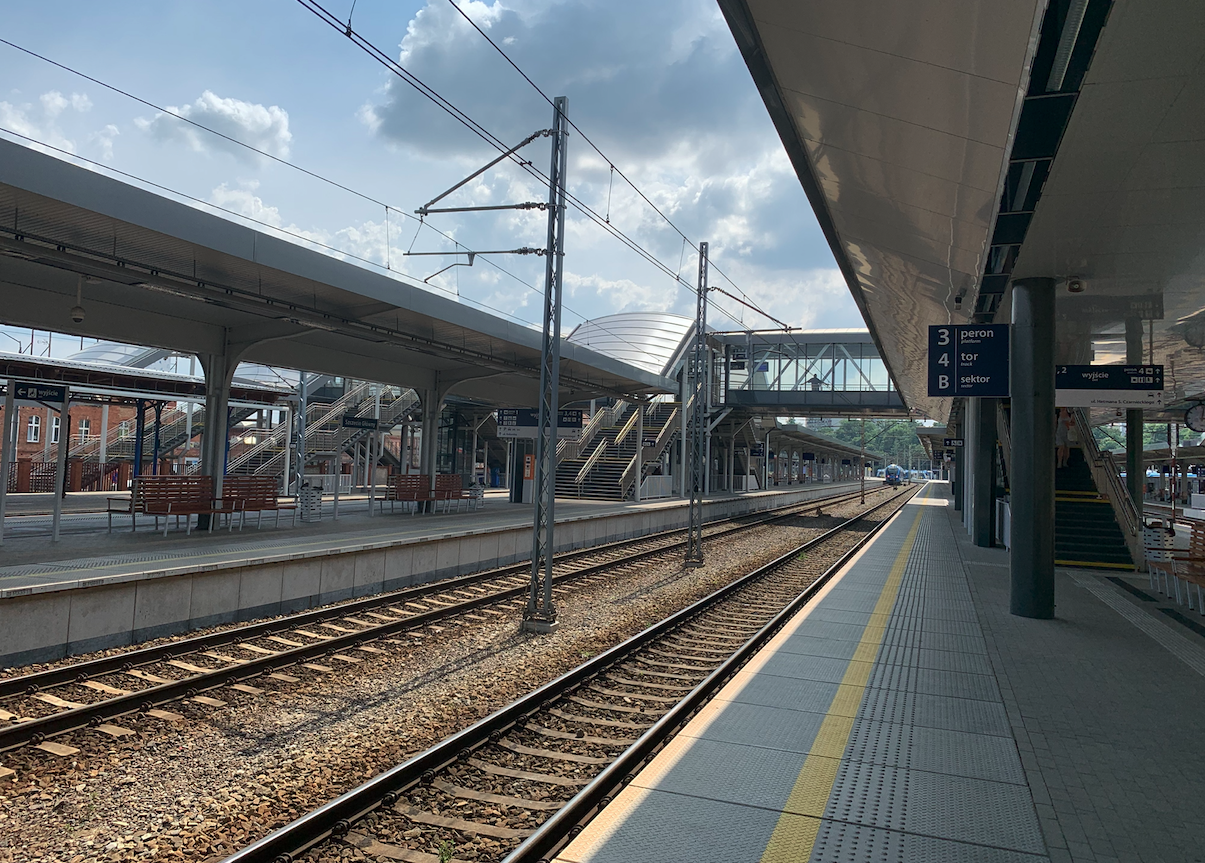Szczecin 2021-08-31
Railway in Szczecin.
Due to the outbreak of World War II by Germans and Muscovites, the borders in Europe changed. Szczecin (Stettin) was annexed to Poland, and as a result, the oldest Polish railway station is Szczecin Główny. When it was built, this station was called Berlinerbahnhof (Berlin Station), because the railway line connected the city of Berlin with Szczecin. The line was 138 km long, and the train journey took 4.5 hours. The first steam locomotive to run on the Szczecin – Berlin route was the steam locomotive “Borussia”, built in the Berlin Borsig plant.
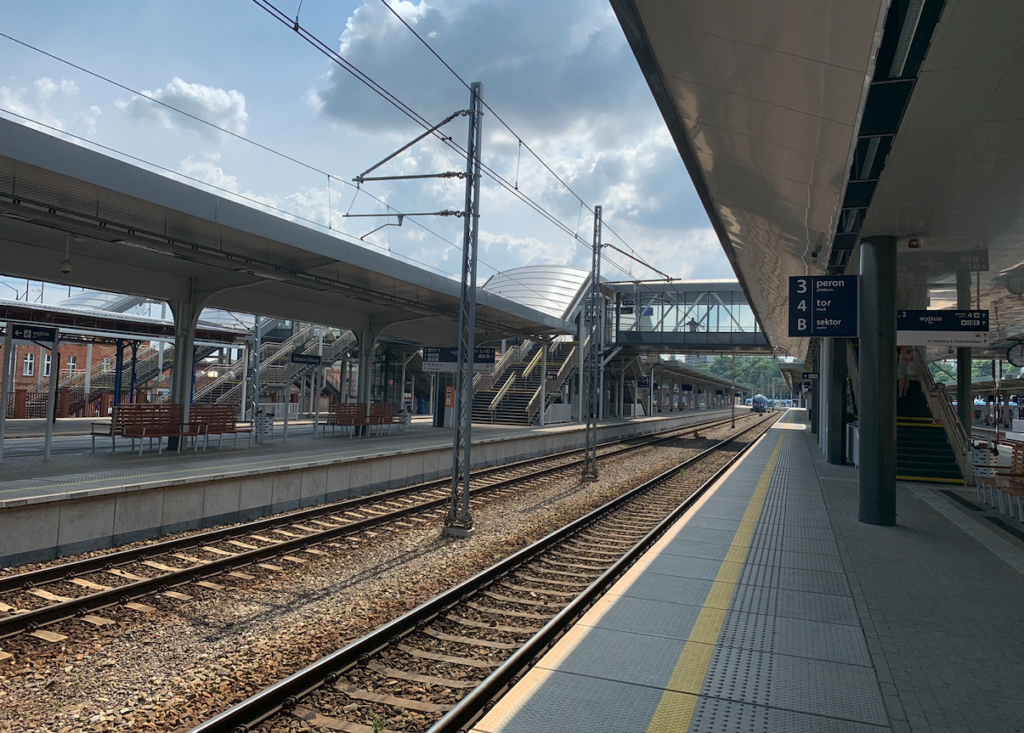

History of the railway in Szczecin.
The history of the railway in Szczecin began in 1836, when the Berlin – Szczecin Railway Construction Committee was established in Berlin. The first train on the route from Berlin to Szczecin ran on August 15, 1843. The grand opening took place with the participation of the Prussian King Frederick William IV, who supported the development of the railway. Soon the name of the station was changed to Stettin Hauptbahnhof. This was in 1850 and this name lasted until 1945. It is worth mentioning that currently the railway line from Szczecin to Berlin no. 433/409: is in use, is single-track and a section is electrified (from the Szczecin side). In Poland it is about 10 km long.
It is worth knowing that in the mid-19th century, Szczecin was a heavily fortified fortress. The main structure was Fort Prussia (Fort Preußen), built between 1722 and 1741, whose task was to defend against attacks from the south-west. It was difficult to find suitable places to run a trail and build a railway station. The railway builders wanted to locate the facility as close to the city centre as possible. The land for the station was found near the Oder River, in the place of a large terraced garden. Initially, the fortress commander did not like this location, who eventually changed his mind.
The station that was built was then a terminal station (not a passing station). This location of the station had the advantage that wagons could be brought right up to the quay and goods could be reloaded directly onto ships. This facilitated trade. Since the construction of the station significantly exceeded the planned budget, a state loan was applied for, which the bank willingly granted, counting on profits.
Initially, the station building was made of wood, but within a few years a brick station was built. The station itself was very impressive and representative. The station was to serve magnates and wealthy people, which is why the interiors were decorated with luxury, like in a palace. But above all, the station was to be used for the transport of goods, which is why there were goods and post office ticket offices there.
In 1846, another section of the railway line to Stargard Szczeciński was built. The line to Stargard was run perpendicularly from the existing route (which we wrote about below) and over two bridges (Oder Zachodnia and Odra Wschodnia) and introduced to the Pomeranian Voivodeship. In 1848, the line from Stargard through Krzyż was extended to Poznań. A railway line was run from Krzyż station towards East Prussia.
To do all this, in 1841, the Kępa Parnicka Island was bought by the Railway Construction Society in order to run railway tracks through it and build a large, main freight station. The island was low and flooded by the Odra River every year. Therefore, the island was raised by about 2 m, pouring out sand extracted from the deepened river. The train that set off from Szczecin to Stargard Szczeciński first entered the siding located in the southwestern part of the station and into the tunnel, and after changing direction, it passed perpendicularly over the tracks leading to Berlin. Next, it entered the bridge over the Oder. Over time, this inconvenient track layout was changed. This happened at the time when the station was rebuilt into a through station.
Szczecin station developed quickly and became too narrow. The platforms were short. Train maneuvers to Stargard Szczeciński extended the train’s dispatch. It was decided to rebuild the station. The architects developed a new design, but its implementation exceeded the financial capabilities of the shareholders. Therefore, the minimal variant was chosen.
In 1859, the station in Szczecin was expanded and at the same time made a through station. The large warehouse, which was beyond the end of the track, was dismantled, the platforms were extended and a new bridge was built over the Western Oder. The first bridges were made of wood, but in 1868, they were replaced with iron bridges. One of the bridge spans is rotatable and allowed navigation. It was an investment that the Railway Company could afford.
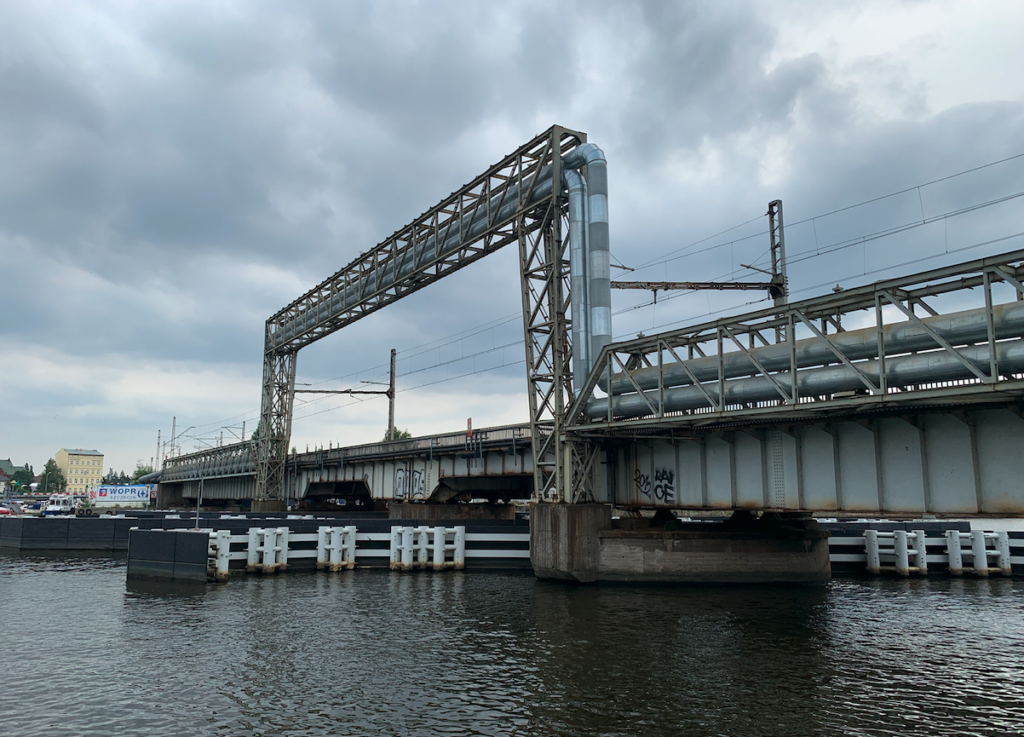
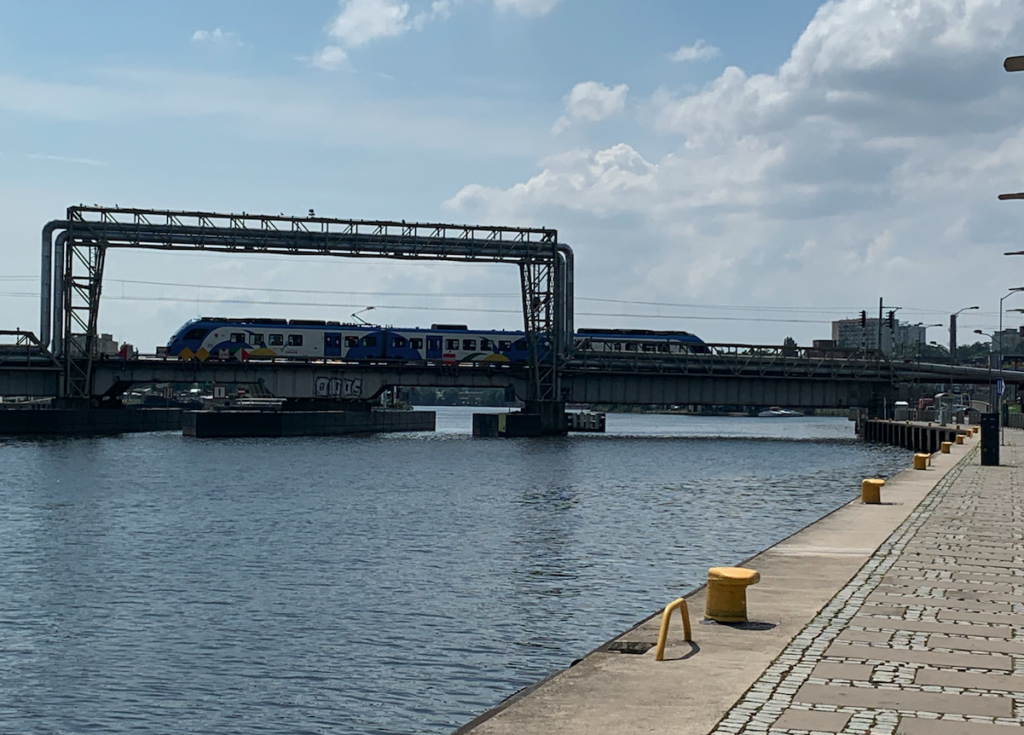
The current track system was built at that time through the northern part of Kępa Parnicka. Around 1865, a railway line was built to Pasewalk (now in Germany). In 1898, a line was built towards Police. From the very beginning, a locomotive shed operated at the station. Currently (2021) it is out of service.

In the period 1900-1901, a station was built that still exists today, although it was expanded several times, and after World War II it was rebuilt from war ruins. Under the main part of the station building there is an air raid shelter for the population. It is the largest civilian shelter in Poland from the period of World War II.
For several months, the Allies wondered “Who should we give Szczecin to?” When Szczecin was finally given to Poland, it turned out that the railway infrastructure was in very poor condition. 50% of the railway tracks were impassable. Telecommunications and traffic security devices did not work, or they were not there. The station building was 60% destroyed. This condition was caused by the Germans, who did not want to leave anything to the Muscovites, and the Russians, who took a lot of railway infrastructure to the CCCP. The takeover of the railway assets from the Soviet authorities took place on August 20, 1945.
Szczecin Główny in Poland.
The electrification of the Szczecin junction took place in the period 1975 – 1980. The Poznań – Szczecin route was electrified on December 15, 1978.
The idea of expanding the station was born in 2010. Work began in 2014 and was completed in 2016. During the renovation, the station building was completely closed to passengers. At that time, a temporary station was in operation. Szczecin Główny Station gained Premium status.
At the same time, the station track layout was rebuilt and new platforms were built. During the renovation of Platform 3, underground tunnels were discovered, which were structures made of bricks. Many years ago, these tunnels served as luggage and mail tunnels. There are four platforms, double-edged and covered. Compared to the previous layout, the platforms were moved to the north-west, because the station level is very limited. Access to the platforms is via two covered overpasses. Before the renovation, the platforms were uncovered. The old underpasses were left, but they are not intended for passengers. The renovation of the platforms was completed in 2018. The platforms are 60 cm high from the railhead. The platform surface has been equipped with paths and warning lines for the blind and visually impaired. There are lifts available for disabled passengers. The platforms are completely roofed, and additionally, glass shelters have been erected on them to protect passengers from the wind. The platforms have lighting, information for passengers, a sound system, numerous benches, and waste bins. Each platform is approximately 350 m long, except for Platform 4, which is a platform for suburban trains to Gryfino, Świnoujście and Germany. Platform 4 is 252 m long. Platform 1 has a historic roof. Passengers can access the station via the following streets: Krzysztofa Kolumba (from the Odra River), Owocowa and Hetmana Stefana Czarnieckiego (from the north-west). The station has new railway traffic control devices. The cost of renovating the station is over PLN 70 million.
The renovation of the station building was thorough. Although the building has not been enlarged, it meets all the needs of modern passengers. From the main hall you can go to the hall with ticket offices, although currently you can also buy white online. The building has a waiting room, several shops, luggage storage, modern toilets, lifts and escalators, and a modern train information system.
Can you be impressed by a train station? Definitely not. Nobody comes to Krakow because there is a cool underground train station there. The station is a place where a traveller, thanks to clear and simple information, can find a connection, buy a ticket and safely take a seat on the train. In 2018, Szczecin Główny served 14,700 passengers, which gave it 16th place in the country.
Currently, the following railway routes pass through Szczecin Główny: No. 273 Wrocław Główny – Szczecin Główny (length 356 km). No. 351 Poznań Główny – Szczecin Główny (length 213.5 km). No. 406 Szczecin Główny – Trzebież Szczeciński (length 37 km). No. 408 Szczecin Główny – Grambow (length 13 km). No. 433 Szczecin Główny – Szczecin Gumieńce (towards Berlin).
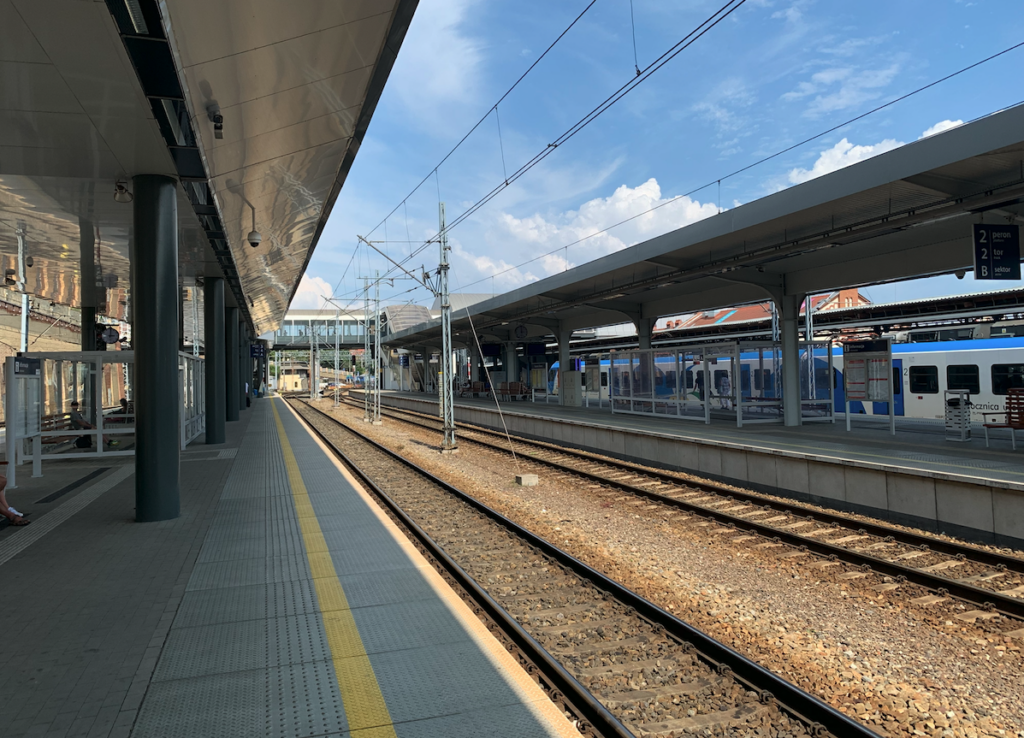
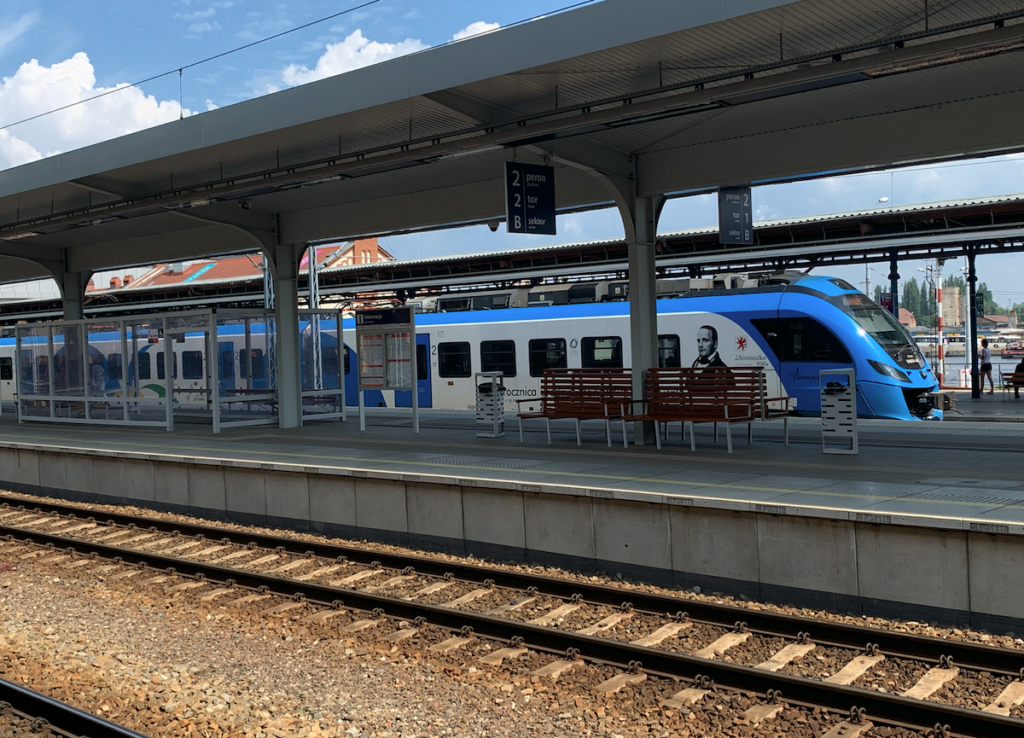
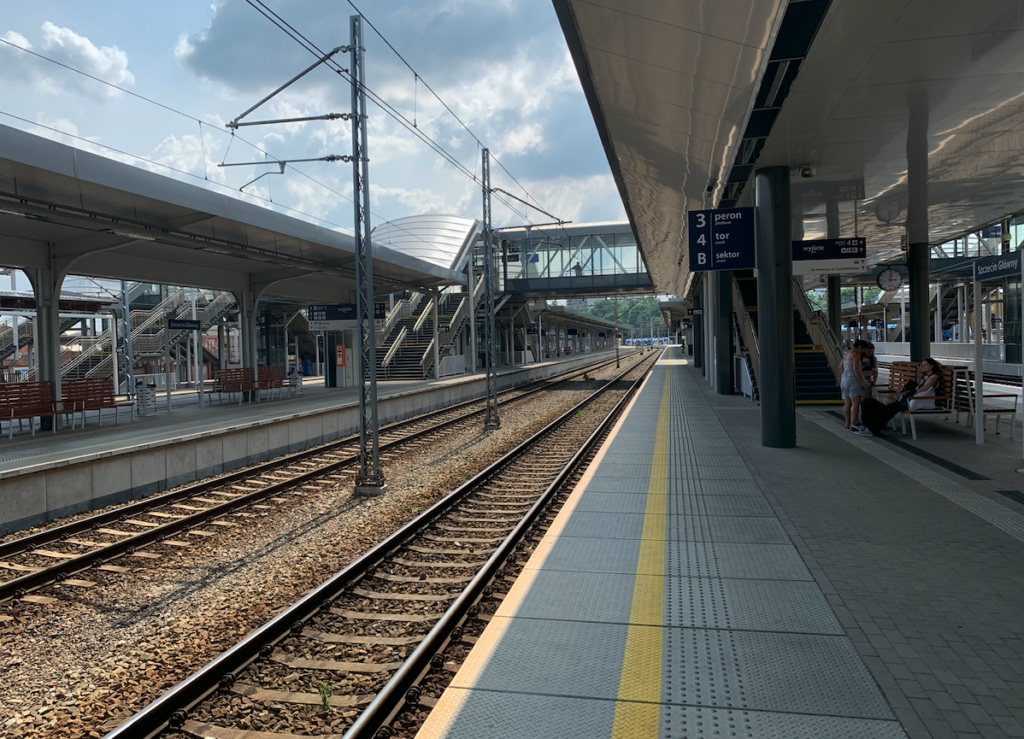

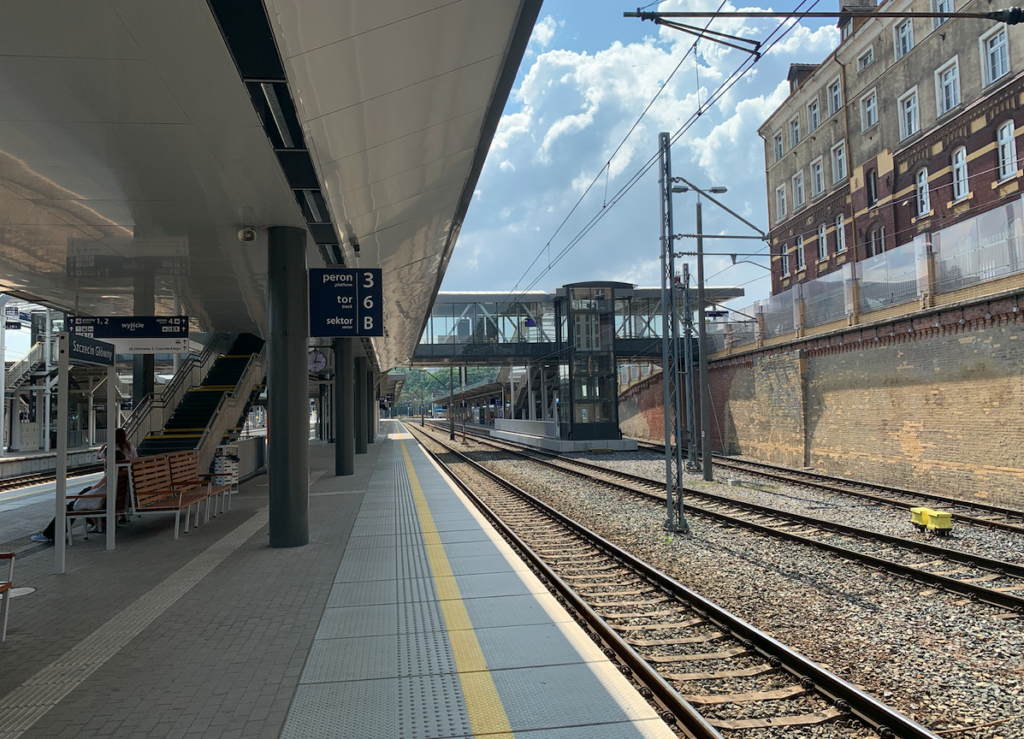
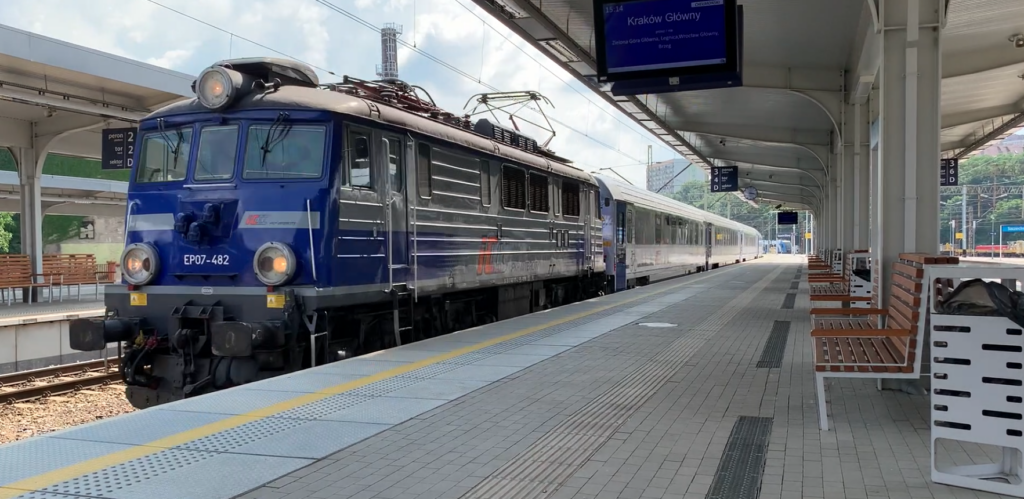
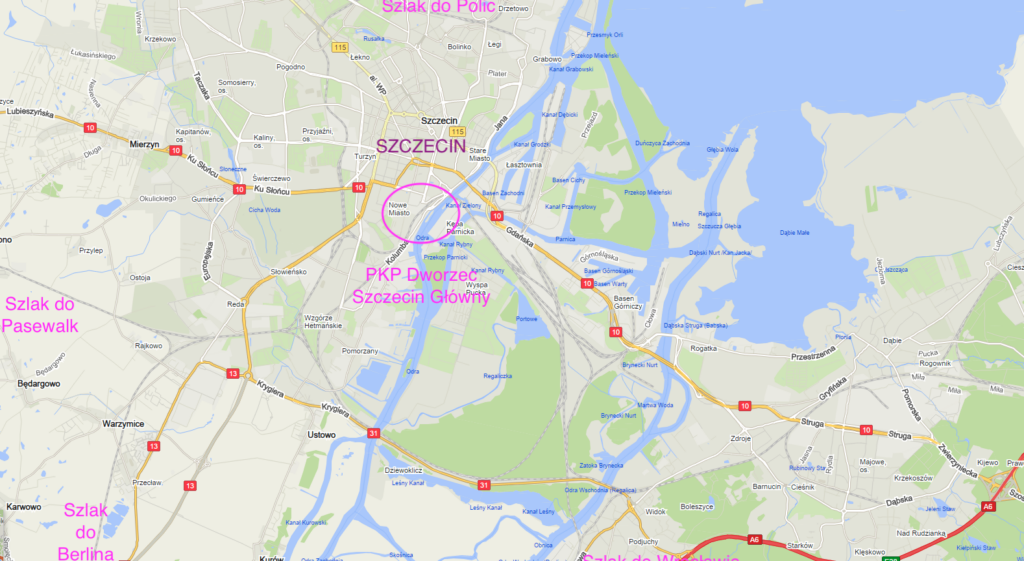
By train to Szczecin Goleniów Airport.
Since May 2013, the Szczecin Goleniów Airport named after NSZZ Solidarność can be reached by train. The train stop is located in the immediate vicinity of the airport terminal, and the journey from Szczecin takes about 45 minutes. Trains run on routes from Szczecin and Kołobrzeg. The trains that run to the airport stop are: From Goleniów in the direction of: Międzyzdroje, Świnoujście, Kamień Pomorski, Wolin. From Szczecin Dąbie in the direction of: Stargard Szczeciński, Choszczno, Krzyż, Chociwel, Runowo Pomorskie, Drawsko Pomorskie, Szczecinek, Łobez, Świdwin. From Szczecin Główny in the direction of: Gryfino, Chojna, Kostrzyn.
Trains depart from Szczecin Główny on average every 60-90 minutes during the summer season. Outside the summer season, there are seven departures per day. A standard ticket costs PLN 12.50. The train stop next to the airport is mainly operated by the PolRegio carrier. The distance from the platform to the terminal building is less than 100 m. The journey time from Kołobrzeg to the airport is about 100 minutes. However, it must be remembered that not all train connections are synchronized with the flight schedule. Nevertheless, waiting 60 minutes for a train is acceptable.
The train stop at the airport was built at the end of a short branch from route No. 402 Szczecin – Kołobrzeg. It was a completely new investment and had nothing to do with the military railway siding that led to the military unit. The stop is impassable, which is why diesel multiple units work well on this route. The line is not electrified yet. On the route, passengers are mainly transported by SA136 diesel multiple unit (DMU).
In 2020, the West Pomeranian Voivodeship Office purchased hybrid multiple units, and it turned out that they work well on Pomeranian routes. A hybrid train is one that can be powered by electricity from the traction network, and when it is not available, by means of a combustion engine, which, through an electric transmission, drives electric motors in the vehicle’s bogies. A hybrid train with a combustion engine reaches a speed of 120 km/h, and using the traction network 160 km/h. These trains are of Polish production, Polish design and built at the NEWAG plant in Nowy Sącz. By 2021, the Pomeranian Voivodeship had purchased 10 trains of this type.
Written by Karol Placha Hetman
